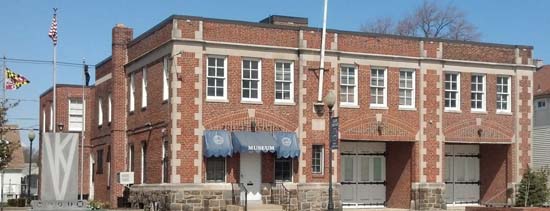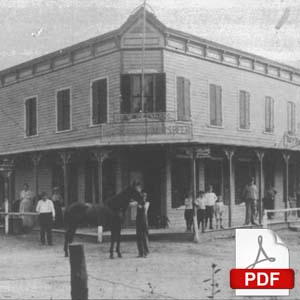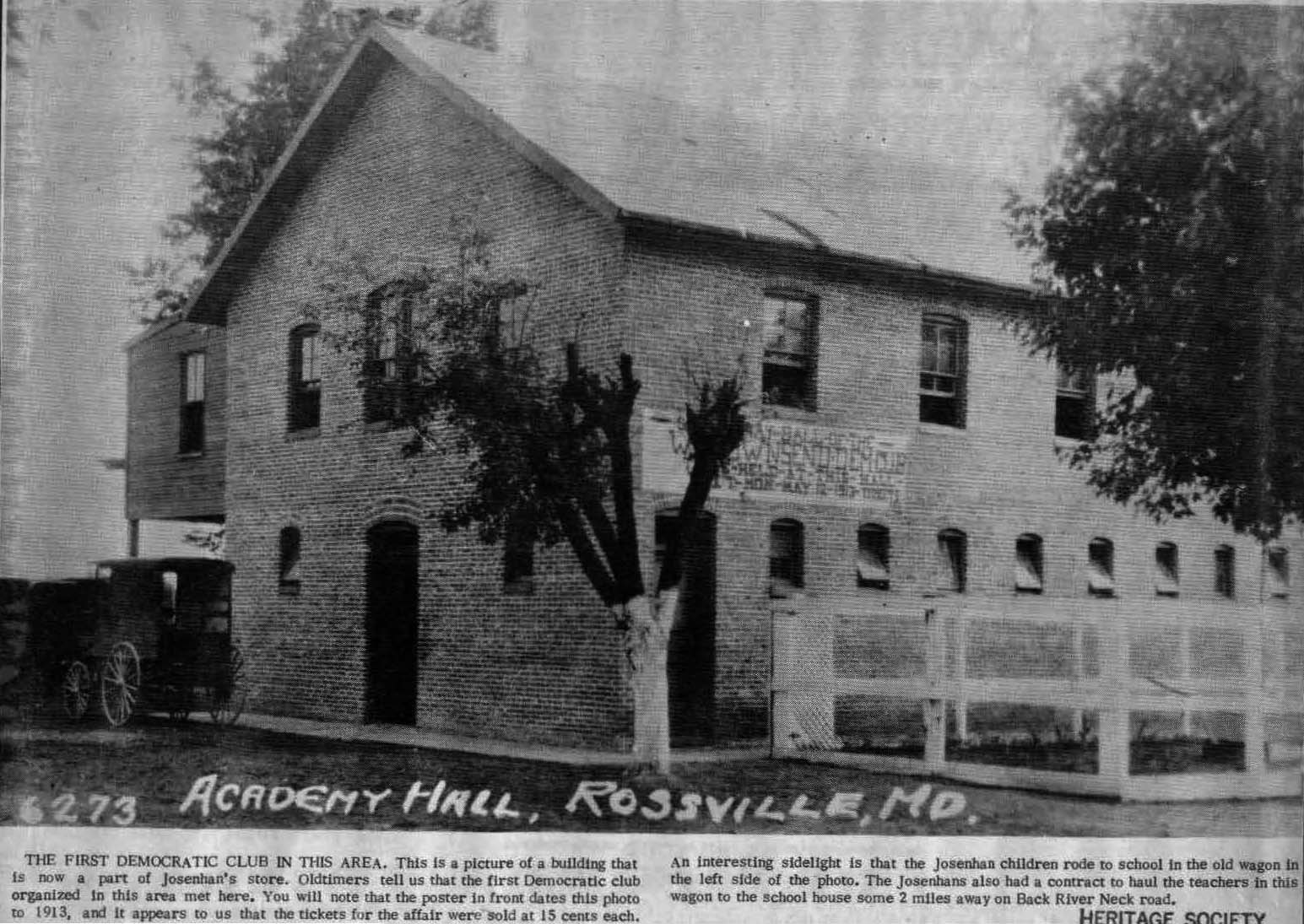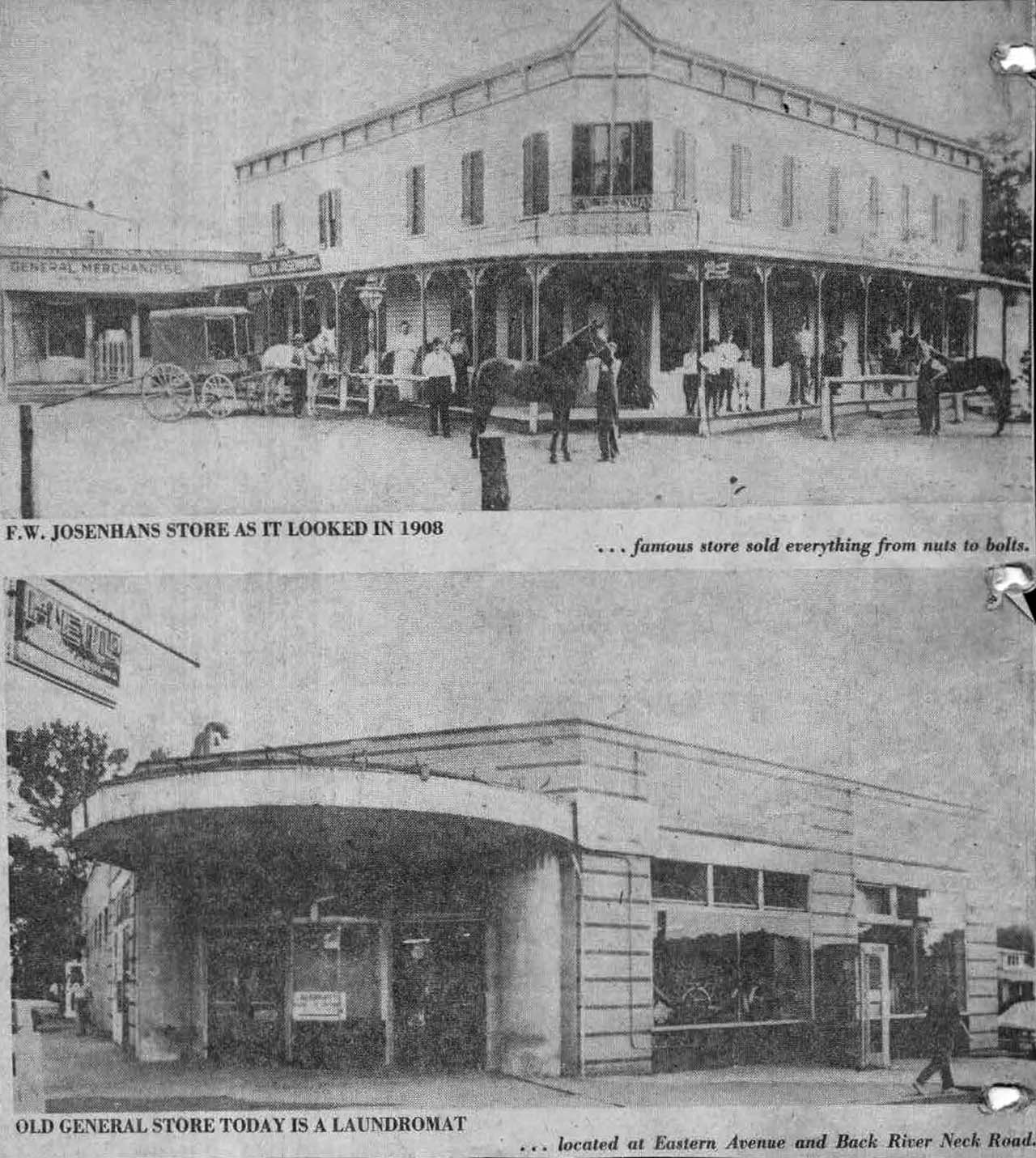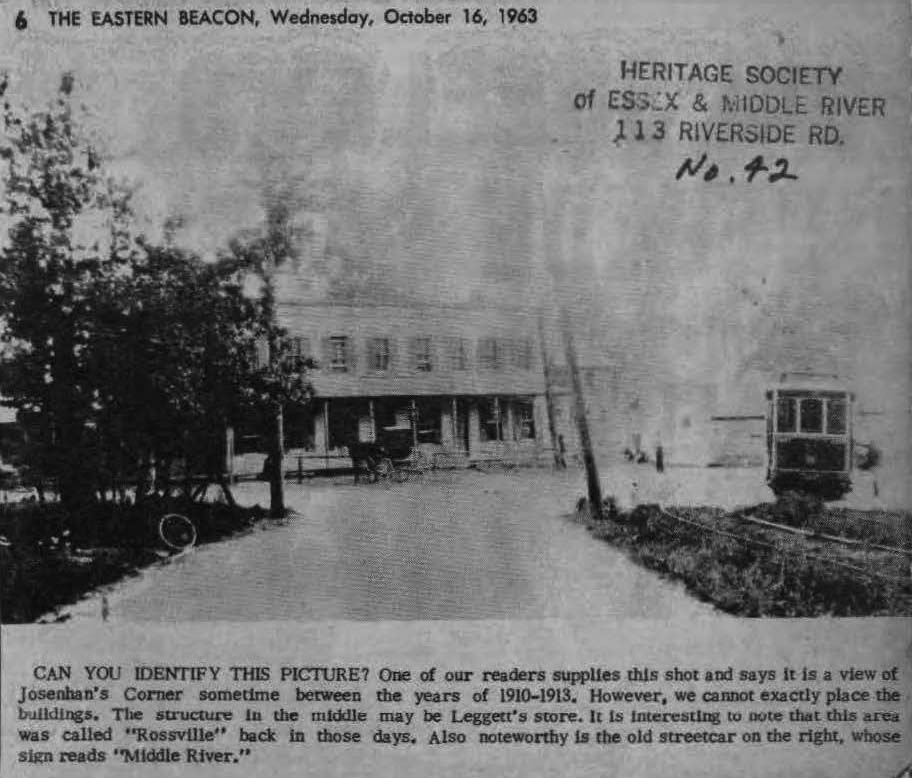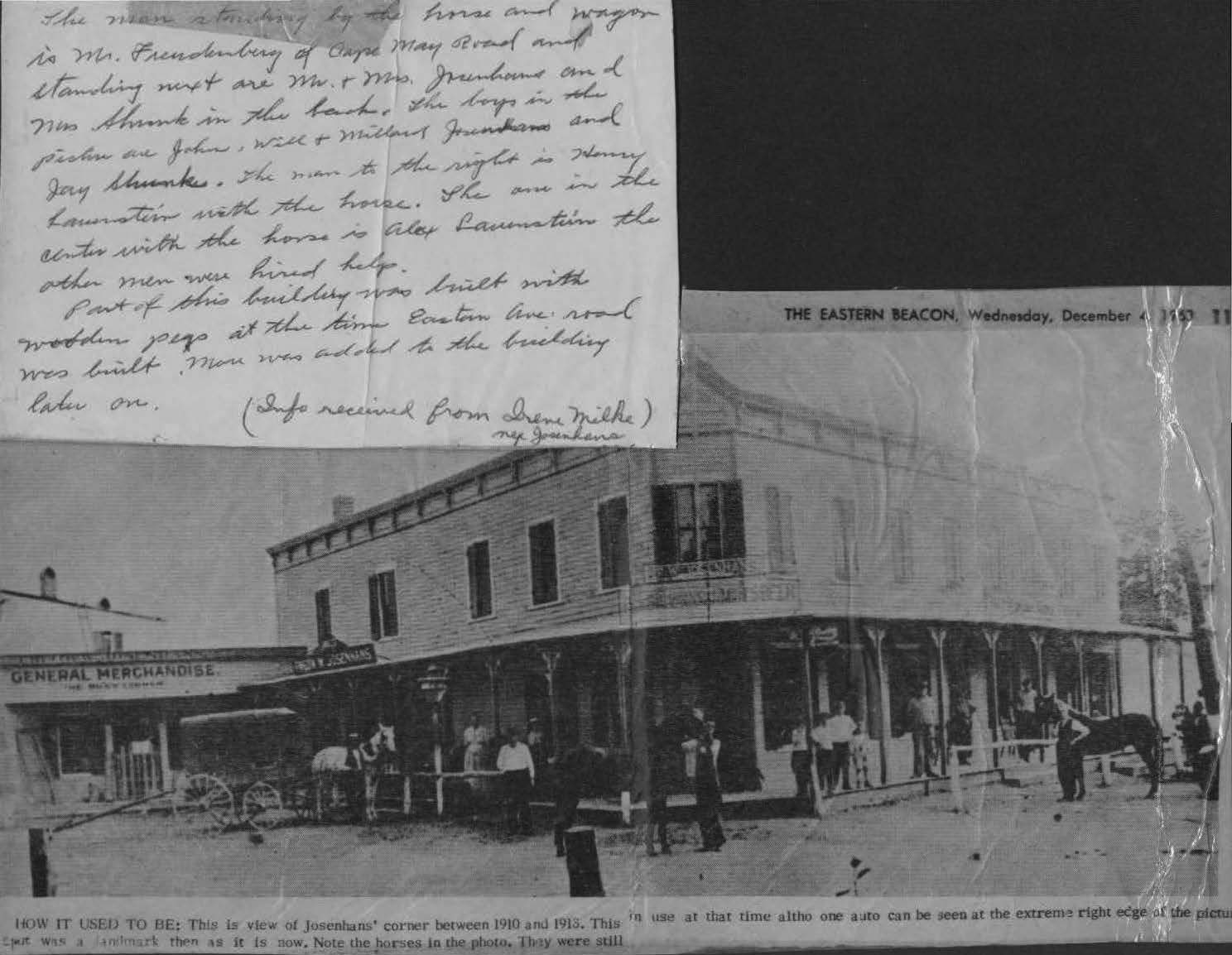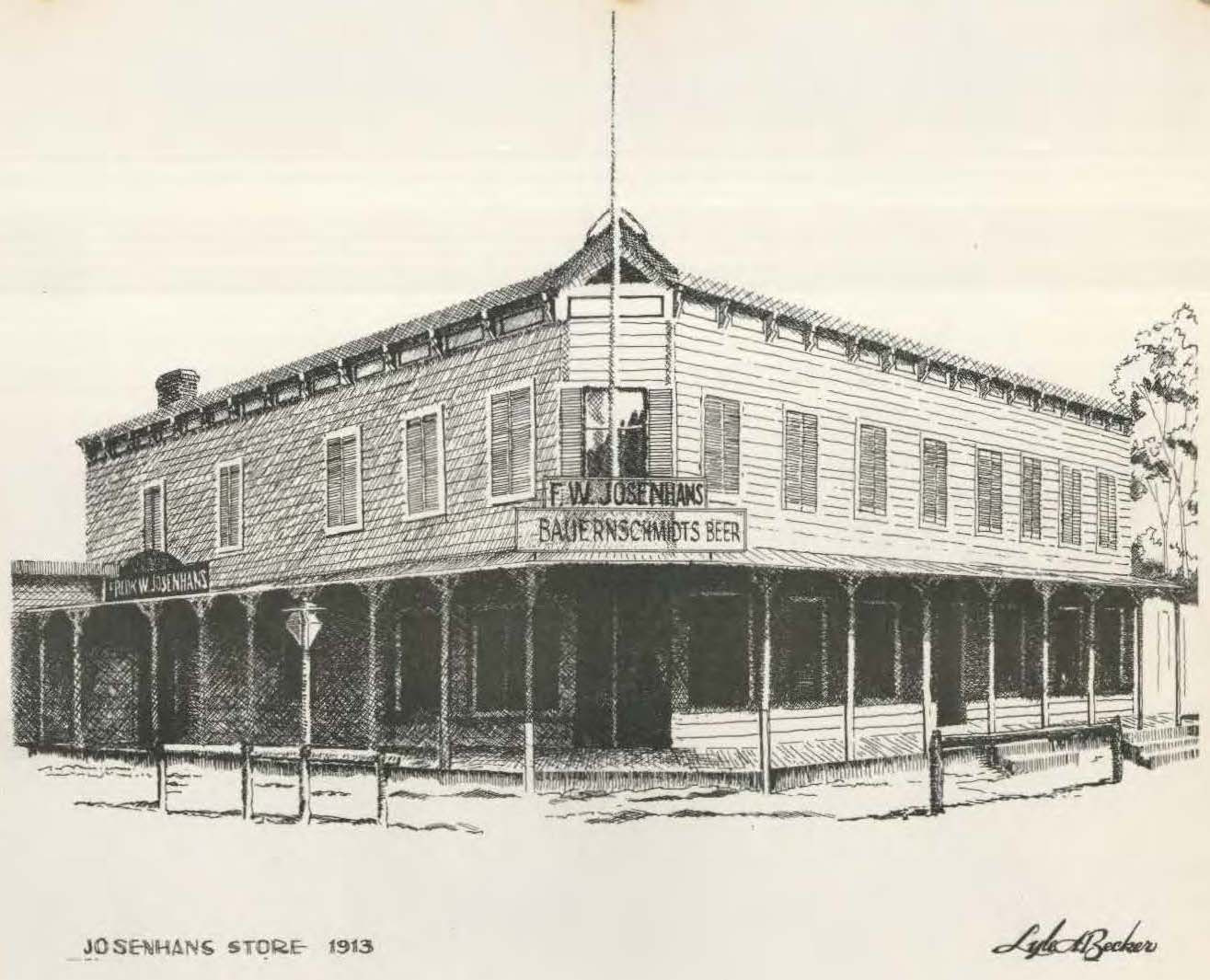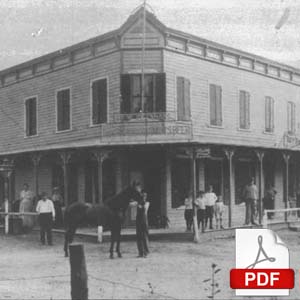 Baumgartner Collection Book #42:
Baumgartner Collection Book #42:
Josenhans Corner
Helen B. Baumgartner’s 1972 history of Josenhans Corner – an early 1900s general store and landmark in Essex, Maryland.
View PDF on archive.org (opens in a new window):
https://archive.org/details/Essexmuseum.comBook186HeritageSocietyBook42JosenhansCorner
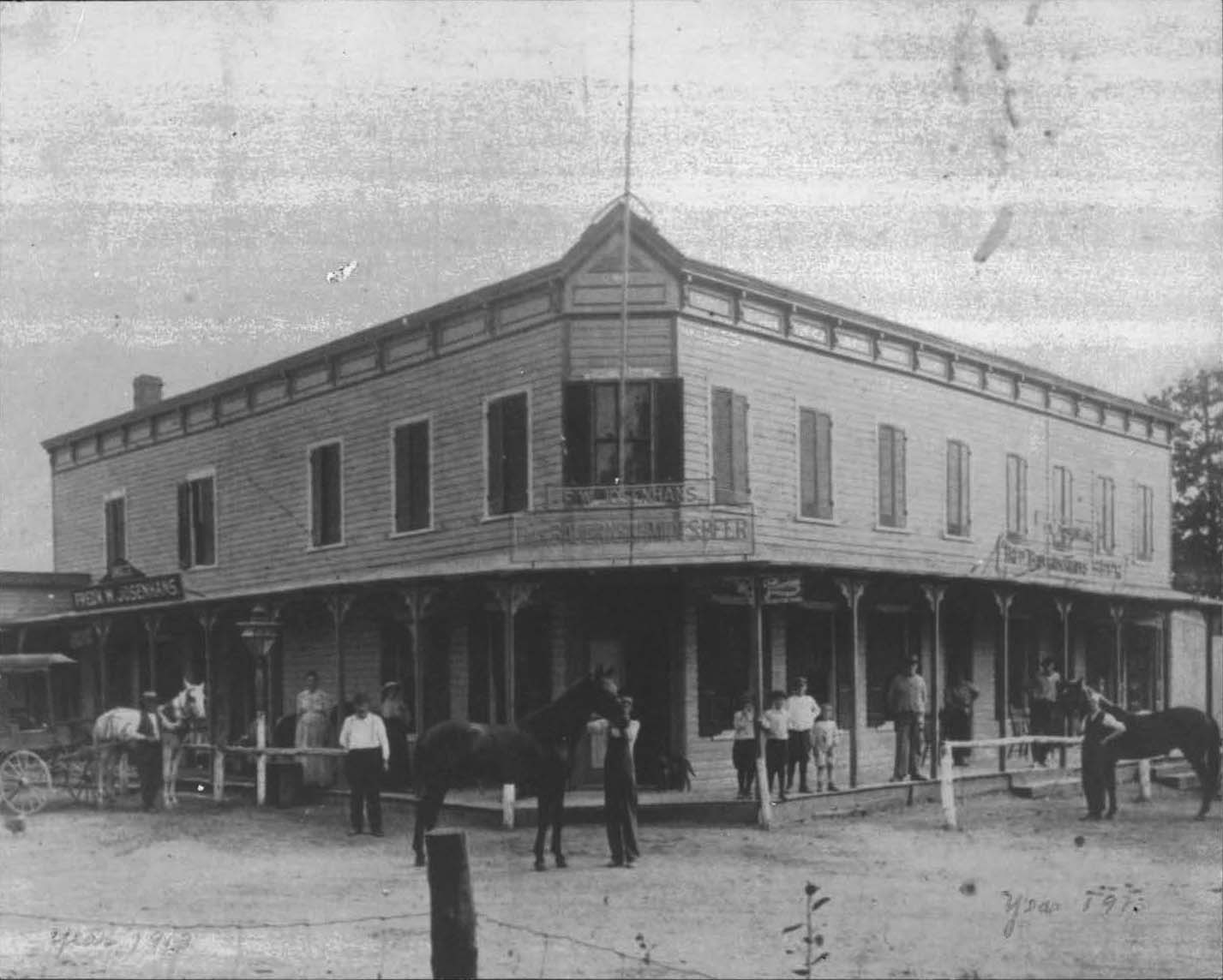
By Helen B. Baumgartner
June, 1972
Let me begin by saying that I wouldn’t be able to write this or any article on the history of this section of Baltimore County without the help and cooperation of the people who lived here at the turn of the century and during the early 1900’s. We sincerely appreciate it, for without their help, the interesting and poignant details of life at that time would be lost. The information in the following story was given us by Mrs. Irene Josenhans Milke.
It was in October 1907 that Frederick W. Josenhans bought the Walters Brothers (William and Fred) corner. It had been sold at public auction in order to settle the estate as both of the brothers had died. The oldest part of the building was built in the 1880’s and was put together with wooden pegs. Until the death of the brothers, it was known as Walters’ Post Office. The Post Office was moved to Rossville and then to Stemmers Run.
On December 1, 1907, Mr. Josenhans opened the store at the corner of Eastern Avenue and Back River Neck Road. It wasn’t long before it became known as Josenhans Corner and, to this day, is shown that way on maps of Baltimore County. The 1500 block of Eastern Avenue and part of the 1400 block were all woods at that time, and was first used as a pasture “for the horses. Then Mr. Josenhans had it leveled and made a ball park for the Josenhans’ boys and the other boys in the community who called themselves the “Dixies”. Today, eight houses stand on this ground – alt belonging to one family – The Josenhans.
Josenhans Hall was built in 1910 and was called Rossville Academy. Dancing classes were held upstairs by Herbert Feldpusch and later by Mr. Elton who also had a dancing school in Highlandtown. Young people came from miles around in horse and buggys. Some even walked as there wasn’t always means of transportation.
The Hall was used for suppers, banquets, meetings and entertainments. Both the Democratic and Republican Clubs held their meetings here. On December 22, 1923, Mr. and Mrs. Henry Homberg celebrated their 50th Anniversary in the Hall and when Back River Methodist Church burned down on February 26, 1928, they used it for their services until the new church was built. The downstairs of the building was used as a stable for the ten horses belonging to the Josenhans. Farmers and travelers also kept their horses in the stable overnight.
Eastern Avenue, in the days of the horse and buggys, was made of oyster shells and it was a pleasure to drive along because of the fine farms and parks. The business places were operated by families and were called roadhouses. Two of the parks, Halt’s and Lawrences’, had large groves where, in the summer, they served fish sandwiches and a glass of beer for 5 cents each. Harvey’s and Mitchells’s were opposite Hall’s. Mitchell had a pavilion over the water where meals were served and you could look across the river to Hollywood Park, another popular park where families could enjoy an afternoon of fun. Opposite was Backus Park which, at one time, was owned by Daniel Homberg. They had a pavilion also and held floor shows. Prospect Park was another popular place and was used for horse racing and fair grounds. Mr. Gilmore owned Prospect Park and he started the carline on Eastern Avenue. He owned a large tract of land and had a mansion on the hill back of what is now used as a salvage place and lumber yard. Mr. Gilmore’s real estate office was at Oriole and Eastern Avenues. It was in the Ball Park on Oriole Avenue that the first Orioles played baseball.
There were nice farms and beautiful woods along Eastern Avenue. The first telephone company in Essex was in Moffett’s Farm House and Eastpoint is now located on part of this farm and also part of Busse’s farm.
The police station was located in Canton until Highlandtown became part of the city. Then it was moved to Lawrences’ Park until a permanent station was built in Essex.
In 1912, the old wooden bridge over Back River was demolished and replaced by a concrete bridge. Part of the old bridge is still used as a pier where people can sit and fish. While the concrete bridge was being built, the wagons had to go along Stemmers Run Road to Philadelphia Road in order to get to the Produce Markets. Often people would leave their teams at Josenhans, where they would be taken care of and use the street car.
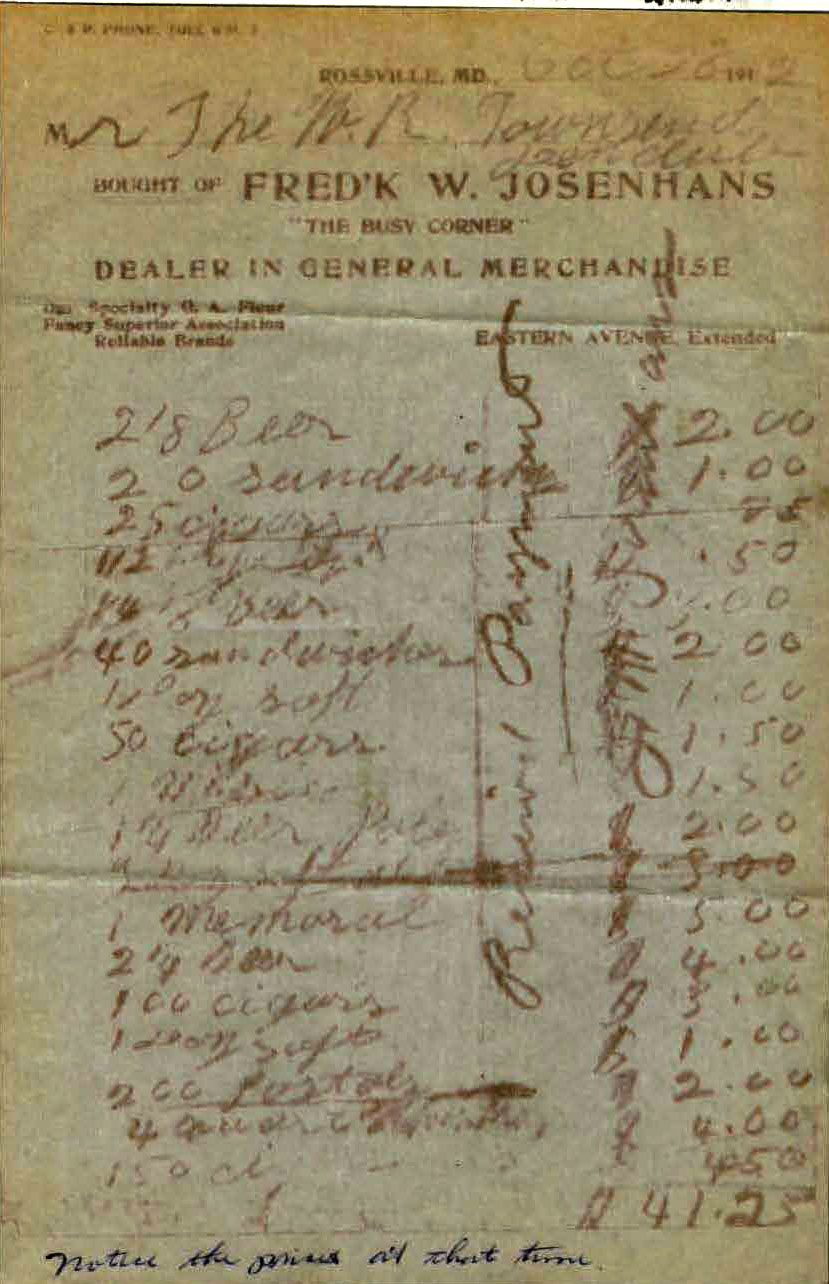
In the evening, the farm boys would line up their wagons loaded with produce across from the store. Since it was so far to market, they would all travel together. In the meantime, they would stop in Josenhans and buy two cigarettes for a penny or a package of Duke Mixture with papers and matches for five cents and roll their own. They liked to trim their whips with different colored baby ribbons which sold for one cent a yard. The next morning, the wagons would pass the store, but you never saw the driver – he would be on the seat sleeping or under it.
The first Sunday in May was the beginning of the busy summer season. The street cars brought the weekend crowds to the shores and they would stop off at Josenhans and give their orders for their parties and picnics. Josenhans had two double teams for long hauling and two single teams for the shores close by. They were used to deliver the beer, ice and groceries ordered by the weekenders.
Launches at Middle River Bridge were also used to take people to the shores. The Holtznecht family owned a tavern there and opposite it was Dick Turpins “Hilltop Hotel”.
When Louis Holtznecht returned from the first World War, he and his brothers, Fred and Bob, built the ice plant. Before that, the Gaithers Express delivered the ice to the taverns by trolley from the
Highlandtown Ice Company. When the winters were freezing, the Hombergs cut the ice from their pond and stored it in their ice house.
From Middle River to Highlandtown, Josenhans and Ed Vandermast’s (at North Point Road) were the only stores. Then Essex began to develop and Guttenberger opened a store there. In ten years, Essex became a town and one of the fastest growing communities in the county.
The “Commodore” at Middle River was, at one time, called Eiler’s Park and was owned by Mrs. Eiler. Later on, it was sold to Mr. Buedel and became known as Buedel’s Park.
Josenhans Store was often a place of refuge for salesmen and travelers during many snow storms. When President Taft was inaugurated on March 4, 1909, there was a terrible blizzard. Trains and street cars were stranded for days. An old man came struggling into Josenhans nearly frozen. Mrs. Josenhans put up a cot for him near the fire. She saw he was dying and asked if he wanted a minister or a priest. He said he would like to have a priest, so Mrs. Josenhans sent for Father Connolly from Mt. Carmel. Father Connelly was an elderly grey-haired man and he looked like a picture walking along the car tracks in the snow with his two dogs. He gave the man the last rites of the church before he passed away. Since no one ever knew who the old man was or from where he had come, the County took charge of the body.
During the flood of August 1933, boats were washed up on top of the car tracks over Back River and the bridge was condemned. The last car that came over was half full of water and the occupants didn’t know how they ever got across as the water was up to the seats. A piano was washed off Pleasure Island at Bay Shore all the way around the bay to Porters Bar and a new house was washed overboard at Bowleys Quarters. The street cars ran as far as Back River Bridge and buses were used to bring the people to Middle River until the new (and current) bridge was built.
Frederick Josenhans died on December 2, 1923 and his wife died on July 15, 1935. After that, the store was run by the remaining sons and daughters. In 1968, after over 60 years of service to the public on the same corner, the Josenhans closed their doors due to deaths and ill health.
So came to an end, another era in our history.
